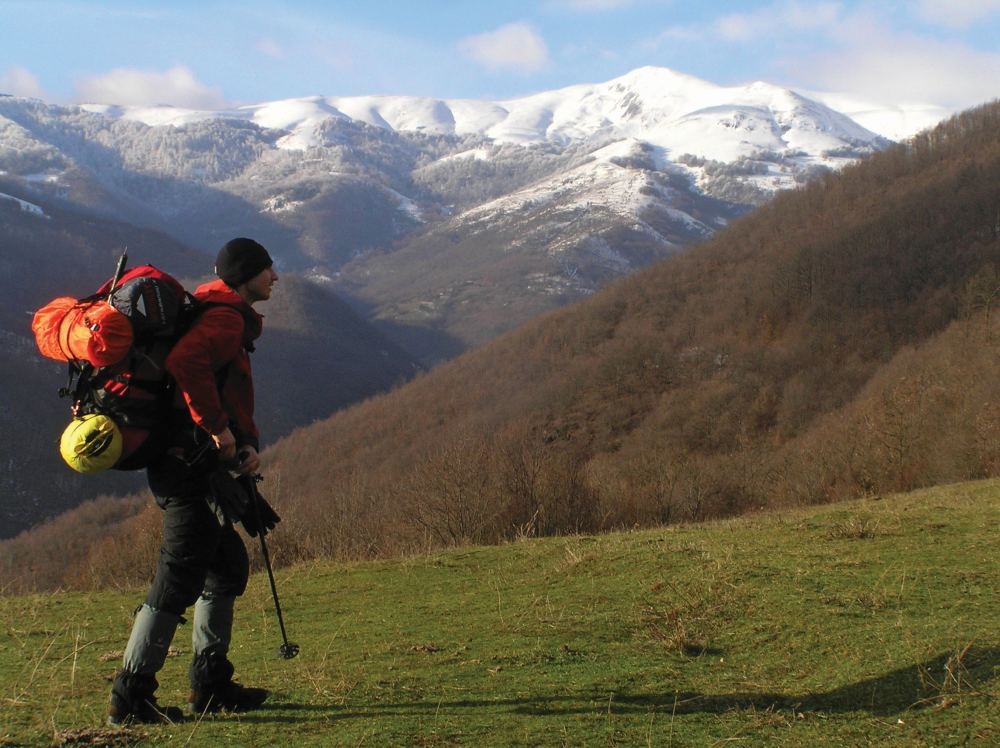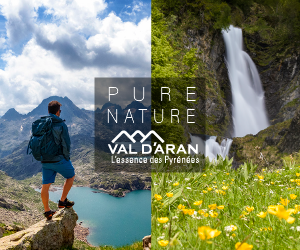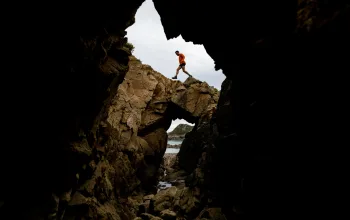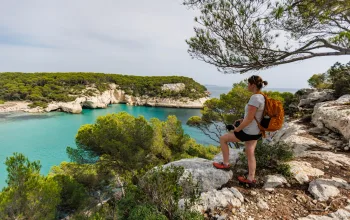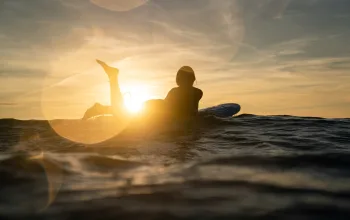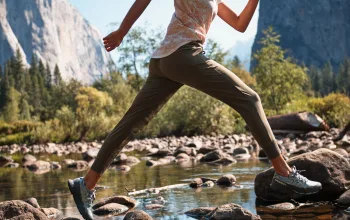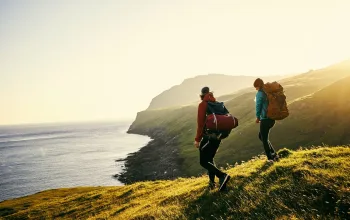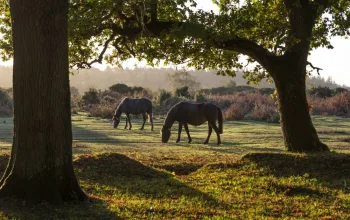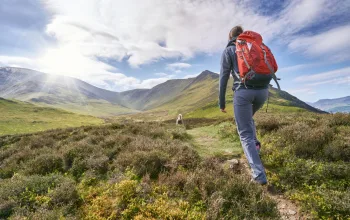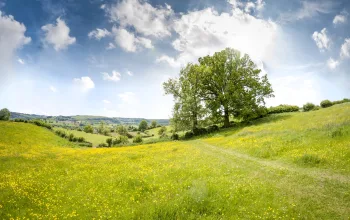Sponsored content
Fancy a walk? You’ve come to the right place. Serbia has a well-developed network of extensive marked mountain trails and paths, covering hundreds of kilometres, and is also traversed by the two European long-distance walking routes (E4 and E7), heading from north to south and from east to west.
Popular trekking areas include the Djerdap National Park (location of the rugged Iron Gates gorge), Fruška Gora National Park, and in the east Mt Rtanj, a mysterious 1,560m-high peak, noted for its remarkably precise pyramid shape.
For a gentler experience head north to the sprawling expanse of the Upper Danube Basin. Here you’ll find pristine protected wetlands around Ludas Lake and the vulnerable sand-steppes of Subotica, home to 170 species of bird and rare plant life.
And as a contrast, even the capital Belgrade is worth a wander, especially if you’re a fan of urban wildlife: raucous bars, buzzing clubs and friendly, carb-loading restaurants may not offer much in the way of tranquility, but you’ll need plenty of stamina to do the city justice!
But it’s the mountains where you’ll find the most spectacular walking country. The Mountaineering Association of Serbia and various hiking clubs offer passionate hikers a number of attractive programmes and tours with experienced guides.
Five top hiking areas
Fruška Gora National Park
A green mass rising out of the vast Srem plains, this beautiful hiking region, 80km from Belgrade, is characterised by gentle slopes, peaceful centuries-old forests, lush vineyards and 16 historic monasteries, dating back to the 16th century. Its highest peak, Crveni Cot (539m), is surrounded by multi-coloured carpets of plains, vineyards and monastery spires. You can wander at leisure along the 500km or more of hiking trails or choose one of the 20 marked routes that thread through this national park. Some don’t require too much effort, while others demand substantial fitness.
Try this
Strazilovo – mountain house Viline vode – mountain house Glavica (13 km).
Djerdap National Park
Djerdap National Park is Serbia’s largest, and home to more than ten nature reserves, plus ten sites of natural heritage, history and beauty. The nearly 100km-long Djerdap ‘Iron Gates’ Gorge (slicing through the border with Romania) is the biggest river gorge in Europe. Forest cover is almost 70%, and the rest mostly meadows and rocky habitats. Over 170 bird species have been recorded here, among them black stork and golden eagle. The area is also home to many large mammals, such as lynx and brown bear. Laced with well-maintained trails, Djerdap is almost a holiday in itself, and to explore it properly will take several days.
Try this...
Pećka bara – Mali Štrbac – Golo brdo (13.9km). For great views of Djerdap Gorge.
Zlatibor & Tara National Park
Home to a small but pretty ski resort in winter, in summer months, Zlatibor is perfect for a gentler immersion into rural life. Spend a few days enjoying the hospitality of traditional villages (including the irresistible tourist trap of Drvengrad – ‘Timbertown’ – built in 2003 in by Serbian film director Emir Kusturica for his film Life is a Miracle) and ride the famous Šargan 8 railway – a narrow-gauge train that loops round Mt Mokra Gora in a figure of eight and which is famed as the most attractive tourist heritage railway in Europe. This western region is also home to the Tara National Park, one of the most attractive regions in Serbia. As much as 80% of the park’s territory is covered by mixed forests of spruce, fir and beech, and there are 18 marked hiking trails covering a total of 120km.
Try this...
Mitrovac – Banjska stena. Offering panoramic views of the meandering Drina River.
Kopaonik National Park
Developed primarily as a ski resort, the strikingly beautiful Kopaonik massif – nicknamed the Roof of Serbia – has some high-altitude hiking routes that make this a superb spot for summer walking tours, especially as the mountain clocks up 200 sunny days a year. Highlights include the 46km Josif Pancic mountain trail – you can hike east towards Semetes Lake and its unusual floating islands for eight to 10 hours or go west for 10-12 hours. Another route takes you to Janko’s Ponds, passing through two nature reserves. The mountain route leads to archaeological sites called Nebeske stolice (Celestial chairs) – a popular spot for paragliding. The region includes several beautiful monasteries on the UNESCO list of cultural heritage sites. Visitors can also climb the steep slopes to the fortified medieval town of Maglic, which offers breathtaking views of Ibar Gorge.
Try this...
The Josif Pancic Trail (46km). A scenic route split into two sections – east and west.
Rtanj and the Balkan/Carpathian Mountains
Serbia’s south-west, around the pyramid peak of Rtanj and the Balkan and Carpathian mountains, is a landscape rich in natural wonders – from the country’s largest waterfall to its most arid slopes. Be sure to bring plenty of drinking water when you head to the summit of Suva Planina (Dry Mountain), so named because it lacks any freshwater springs. Top off a visit to this area with a hike to Djavolja Varos (Devil’s Town) a landscape of 200 20m-high earth figures in the the Radan Mountain foothills. Scientists might say they were created by erosion, but we like the old theories. One legend asserts that the towers were formed to prevent the Devil from carrying out a wedding ceremony between a brother and sister. To thwart this sin, an otherworldly force turned all the guests to stone. Devil’s Town was on the shortlist of sites for the new Seven Wonders of the Natural World.
Try this...
Gajtanska vrata-Slišane (16.6 km). This route offers beautiful views to the north and south.


